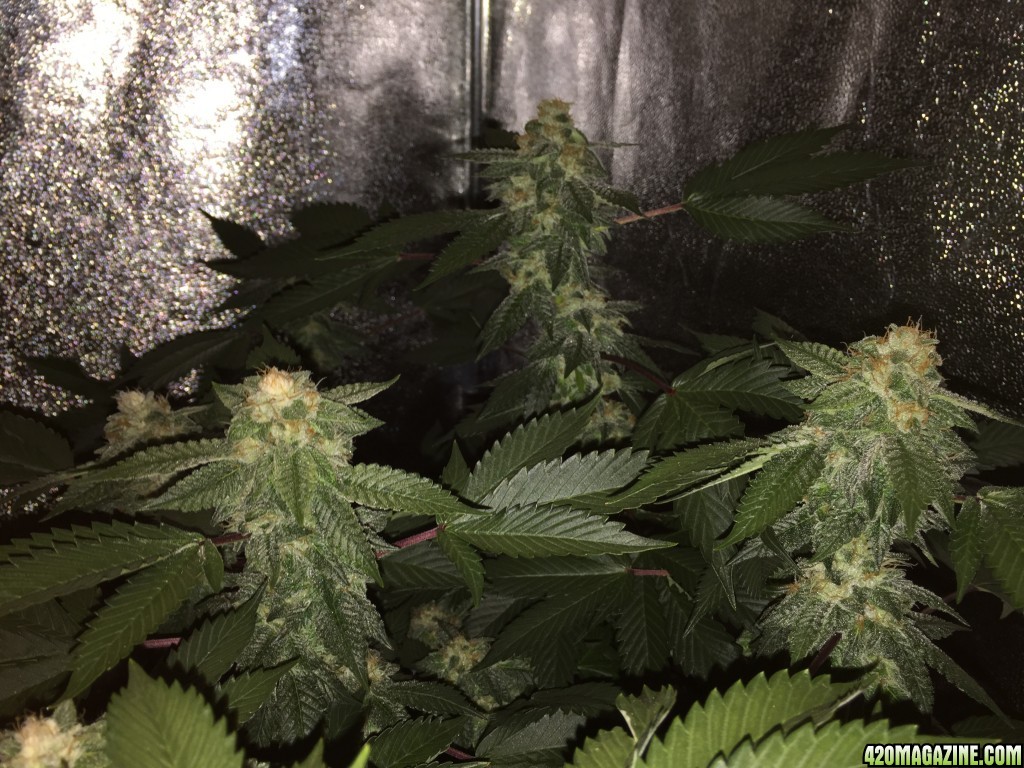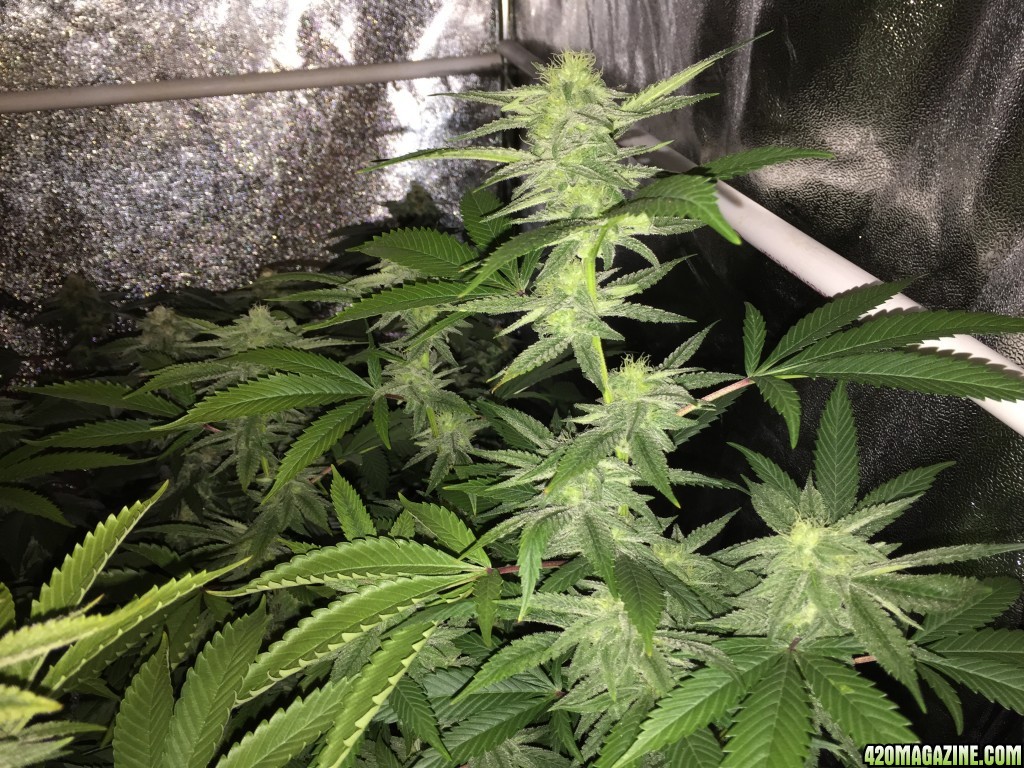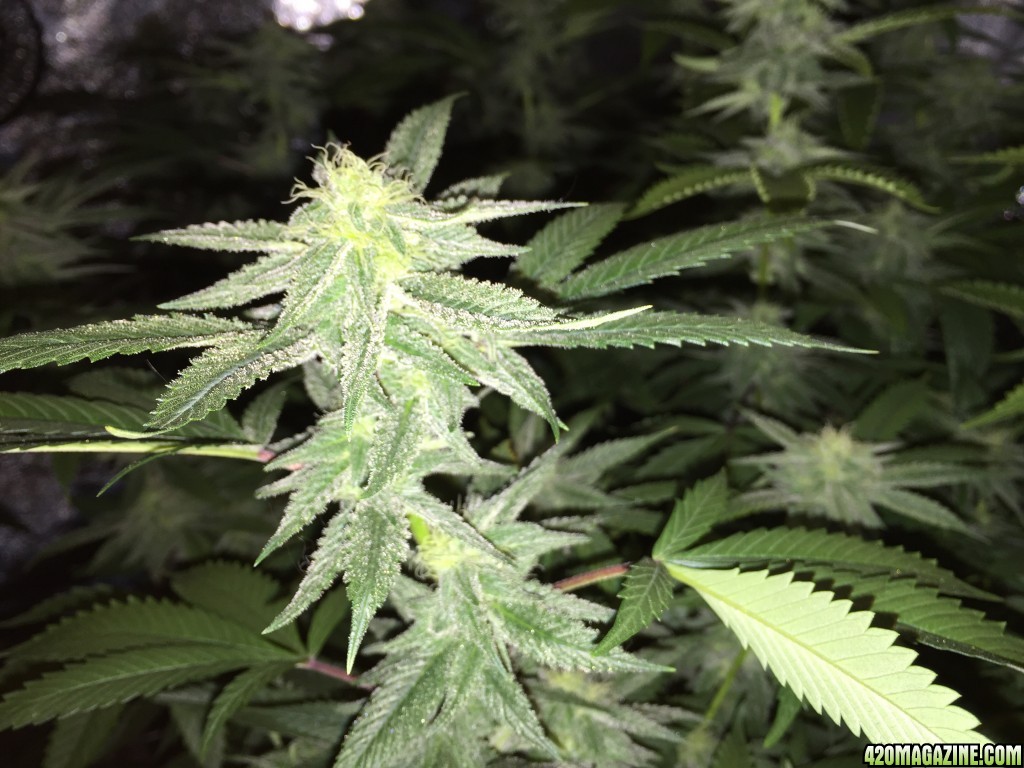Dutty Panty
New Member
Wish I could find a bank that carries reason genetiks
How To Use Progressive Web App aka PWA On 420 Magazine Forum
Note: This feature may not be available in some browsers.





 Paka!
Paka!





Tavo,
Congratulations to a much deserved win....you are such an inspiration to me....just the epitome of the laid back Hawaii surfer dude growing the most killer MJ on the island in the most humble way and you have absolutely no fxxking idea what a seriously cool dude you really are....I sure do......
It had to be you, it had to be you
I wandered around, and finally found
The somebody who could make me be true
Harry Connick, Jr. Lyrics, When Harry Met Sally Soundtrack Movie, 1989


 aw Shawnee that's awfully kind of you
aw Shawnee that's awfully kind of you 


 I'm just a guy trying to follow a path with heart...this has been the most worthy endeavor, and I appreciate everyone on this amazing journey with me. Wow
I'm just a guy trying to follow a path with heart...this has been the most worthy endeavor, and I appreciate everyone on this amazing journey with me. Wow  you're too nice thank you. I certainly do like surfing!
you're too nice thank you. I certainly do like surfing! 




Sorry guys been so busy, way over due for an update but really wanted to share this.
By John Kempf
Agriculture Solutions Inc. | Ontario, Canada | Conventional and Organic Fertilizer Solutions
Our vision and mission is to help farmers produce healthy crops that are insect and disease resistant and greatly reduce or eliminate the need for toxic insecticides and fungicides. We can accomplish this by providing farmers with knowledge of how diseases and insects interact with plants, information about tools to monitor crop health in the field, and agricultural inputs that can be used to increase and enhance plant health.
A plant’s health and immunity is based on its ability to form structurally complete compounds such as carbohydrates and proteins. Complete carbohydrates, proteins, and lipids are formed by healthy plants with a fully functional enzyme system, which is dependent on trace mineral enzyme cofactors.
Plant pathogens, bacterial and fungal diseases, and insects have less complex digestive systems than higher animals and lack the needed enzymes to digest complete plant compounds. In his book titled, “Healthy Crops”, Francis Chaboussou has documented a fair amount of research on the plant-pathogen relationship, protein formation in plants, and the plant immunity connection. Francis’ theory of plant health, which he terms “taophobiosis”, has its foundation on the premise that insect and disease pests cannot utilize complete proteins and carbohydrates as a food source.
We work with a broad variety of fruit and vegetable and broad acre crops in many regions with different soils and climates. We have successfully grown insect- and disease-resistant crops on many farms. On many of the farms, we have noticed some interesting transitional stages of plant health (see Plant Hierarchy of health, next page) and energy levels as soil and plant health improve over time; frequently, over a period of a few months to several years, depending on the crop and previous soil conditions. These stages of improving plant health have been based on our own experiences and from field observations. Over time and with experience on many farms, a succession pattern of plant health stages is becoming clearer.
As charted in the graph on page 2, efficient photosynthesis and the formation of complete carbohydrates is the foundation of plant health and immunity. Without efficient photosynthesis, plants will not achieve any level of immunity or performance. With functional photosynthesis and adequate levels of minerals and trace minerals to serve as enzyme cofactors, formation of complete proteins is initiated. As photosynthetic capacity and plant energy increase, plants begin to store surplus energy in lipids - plant oils. These lipids are the building blocks used to build plant protection compounds, called plant secondary metabolites (PSM5) or plant essential oils.
As soils and crops transition from commercial to biological production practices, these crops seem to progress through several stages of overall health. These several stages of plant health tend to overlap and blend together in the field rather than being sharply defined.
Phase I
In this foundational phase of plant growth and health, a plant’s needs for adequate sunlight, air, water, and minerals are all being met; an efficient photosynthetic process is absorbing carbon dioxide from the air, water from the soil, and with the energy input from the sun, begins producing plant sugars and carbohydrates. Initially, the sugars formed during this process will be monosaccharides - simple sugars such as fructose, sucrose, and dextrose. As the process evolves, more complex sugars, called polysaccharides begin to develop. Cellulose, lignin, pectins, and starches are structural and store carbohydrates produced in greater quantities as plants become healthier.
In our experience, as long as plants are photosynthesizing properly and producing pectins and other complex carbohydrates, these plants do not seem to be susceptible to soil borne fungi – styled as “pathogens”. Saprophytic fungi (fungi which decompose dead plant residue) such as alternaria, fusarium, and verticillium only become a problem when plants are unhealthy to the point where they no longer develop complete carbohydrates. As long as we have active photosynthesis and energy transfer, these “pathogens” cease to be a problem.
Phase II
As photosynthetic energy increases, plants begin to transfer greater quantities of sugars to the root system and the microbial community in the rhizosphere. This increase in energy and a food source for the soil microbes will stimulate them to mineralize and release minerals and trace minerals from the soil matrix, and provide them in a plant available form. Plants then utilize these essential minerals as enzyme cofactors which are needed to form complete carbohydrates and especially proteins. Soluble sugars, monosaccharides, when partnered with nitrogen, are the base materials used to form amino acids. Through the action of enzyme catalysts these amino acids are bonded together to form peptides from which complete proteins are formed.
Thanks to their rapid metabolism, insects need large amounts of protein for growth and reproduction. They can source their protein requirements from plants that have elevated levels of soluble amino acids in the plant sap. Many insects have a simple digestive system that lacks the digestive enzymes needed to digest complex proteins. In our experience, plants which are forming complete proteins and have low levels of soluble amino acids, are not susceptible to insects with a simple digestive system. This would include insects such as aphids and white flies and especially larval insects such cabbage earworm, alfalfa weevil, tomato hornworm, and many others.
Phase III
As photosynthetic energy and efficiency increases, plants develop a surplus of energy beyond that needed for basic growth and reproduction. Initially, large quantities of this surplus energy, in the form of sugars, are translocated to the root system, as high as 70% of the total sugar production. Later, the plant begins to store this surplus energy in the form of lipids – plant fats – in both vegetative and reproduction tissue. In vegetative tissue, these fats are primarily in the form of omega 3s, whereas omega 6s and 9s are mostly found in the storage organs or the fruit.
Plants always maintain a minimum baseline of lipid levels since they need these compounds to help form the phospho lipid cell membranes. As energy and lipid levels increase, this cell membrane becomes much stronger and more resilient enabling it to better resist fungal pathogens. It appears as though once plants achieve higher lipid levels and stronger cell membranes, they become more resistant to the airborne fungal pathogens such as downy and powdery mildew, late blight and others, as well as some bacterial invaders, notably fire blight, scab, rust, bacterial speck, bacterial spot, and others.
It should be noted that plants must have a functional digestive system (the microbial community in the rhizosphere) before they will develop to this stage of plant health, otherwise, they will lack the energy needed to develop higher levels of lipids.
Phase IV
The elevated lipid levels developed in Phase III are then used to build complex plant protectant compounds styled plant secondary metabolites. The plant builds these plant secondary metabolites (PSM5), or essential oils, to protect itself from would-be parasites, UV radiation, or overgrazing by insects or herbivores. Many of these compounds, which include terpenoids, bioflavonoids, carotenoids, tannins, and many others, contain anti-fungal and anti-bacterial properties, as well as digestion (enzyme) inhibitors.
Once plants achieve this level of performance they become immune to insect attack from insects that have a better developed digestive system, primarily the beetle family such as cucumber beetles, Colorado potato beetles, and Japanese beetles. At this point, plants have a tremendous level of stress tolerance and can cope with weather extremes reasonably well.
Again, these phases of plant health are based on our observations and experiences in the field. Transitions in the field are not always clearly delineated as in this chart, however, over time a clearer picture begins to emerge as crops and soils become healthier and healthier and “pathogens’ become less and less of a problem. Farming can quickly become a most enjoyable occupation.
this sounds familiar....where have I heard these things before?
Sorry guys been so busy, way over due for an update but really wanted to share this.
By John "Doc Bud" Kempf
 :
: 



Those look amazing for only 36-39 days! Wow!
How long do you reckon until you chop?